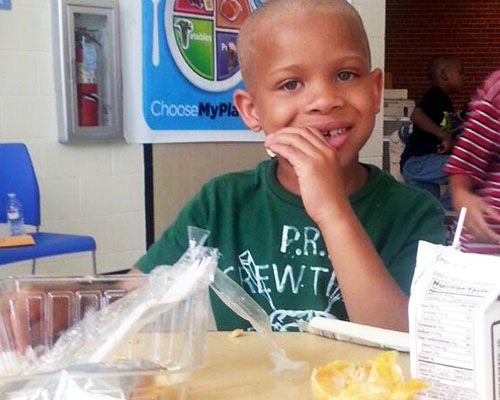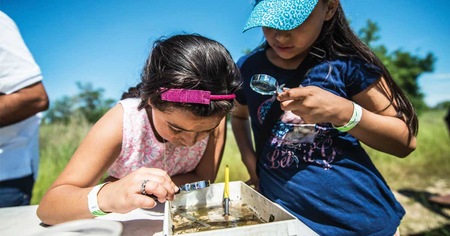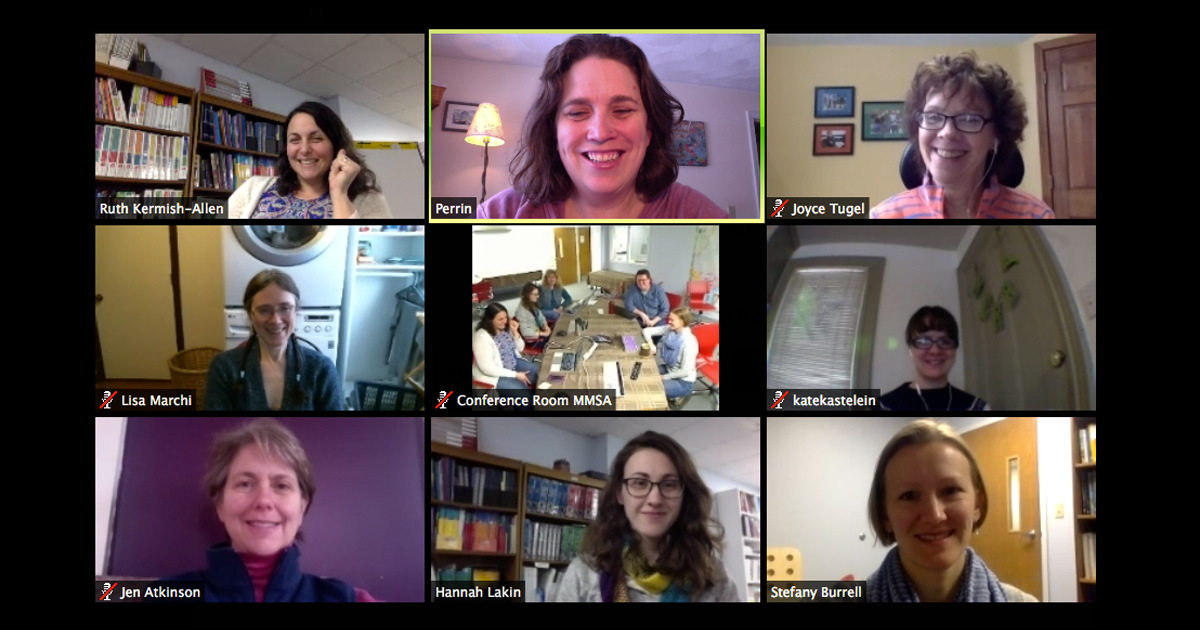The Problem:
During the summer, the faucet is turned off for low-income children. Research shows that the size of the achievement gap remains constant during the nine months of the school year, but widens during the summer months. Only about one-third of households participate in a summer learning opportunity. Of those opportunities, many are not designed to stem summer learning loss. And in 2014, only one child in six eligible for the Summer Food Service Program (part of the National School Lunch Program) received summer meals.
Every summer, low-income youth lose two to three months in reading achievement while their higher-income peers make slight gains. Most youth lose about two months of grade-level equivalency in math skills in the summer. Year after year, these losses accumulate. By the end of third grade, four out of every five low-income students fail to read proficiently, making them four times more likely to drop out of high school.
And we know that children lose more than academic knowledge over the summer. Most children—particularly those at high risk for obesity—gain weight more rapidly when they are out of school during summer break. With the child poverty rate persisting at a much higher rate than prior to the recession, providing daily access to nutritious meals remains a vital concern when students are not in school. Food insecurity for children leads to higher likelihood of health, behavioral, and social development problems.
Summer learning providers and summer meals sites serve many of the same children and face many of the same challenges. Administrative work, recordkeeping, and reporting requirements differ for the most common federal programs—even those targeting the same children—making administration more complicated and less efficient for providers. Challenges persist in reaching rural students, requiring transportation solutions. And keeping families informed of opportunities requires a large lift on outreach, which must be coordinated with other agencies.
The Solution:
Investing in partnership between learning and meals creates greater returns by ensuring that students get both types of resources in one place. Each summer, millions of children participate in summer school, summer enrichment programs, recreation activities, and other structured learning opportunities. Schools, recreation centers, libraries, and youth-serving community-based organizations all serve as summer feeding sites. Combining structured learning and feeding programs ensures that students receive nutritious meals, regular physical activity, and high-quality learning opportunities throughout the summer. Gathering youth together for meals (congregate feeding sites) ensures they are safe and supervised for those portions of the day, aiding working families. Structured, congregate feeding programs also improve accountability, ensuring that meals are consumed by the intended recipients.
Steps for Continual Improvement
Policymakers can support the coordination and combined impact of summer learning and meals. The Summer Meals Act of 2015 (S.613 /H.R.1728) includes several promising practices:
By lowering the area eligibility threshold from 50 percent low-income to 40 percent, the Summer Meals Act tackles two important challenges:
- Aligns with the 40 percent threshold for the 21st CCLC program, removing administrative barriers for providers.
- Ensures that rural communities with less concentrated poverty can serve summer meals to poor children.
The Summer Meals Act allows schools and other organizations to be cross-eligible for both summer meals and afterschool meals and snacks. This reduces the administrative burden for programs that feed low-income children year-round.
The Summer Meals Act calls for an additional $10 million in competitive grants to support transportation solutions that ensure children in rural and other hard-to-reach areas can access summer meals. Priority is given to feeding sites that also offer educational or enrichment activities, providing even greater return on this transportation investment.
Additional Policy Changes to Consider:
- Allowing sites to serve three meals per day, and accounting for the additional cost of feeding older youth.
- Supporting partnerships to get meals and learning opportunities to where kids are. Examples of Bookmobiles, book distribution programs, and community-based enrichment partners can team up with food banks and nontraditional feeding sites such as libraries, farmers markets, WIC clinics, hospitals, and neighborhood block parties to make sure kids not in formal programs have access to both meals and learning, all summerlong.
Source: The National Summer Learning Association is the only national nonprofit exclusively focused on closing the achievement gap by increasing access to high-quality summer learning opportunities. NSLA recognizes and disseminates what works in summer learning, develops and delivers capacity-building offerings and convenes and empowers key actors to embrace summer learning as a solution for equity and excellence in education. For more information, visit www.summerlearning.org.
Photo courtesy of the National Recreation and Parks Association Program in Columbus, Ohio.




